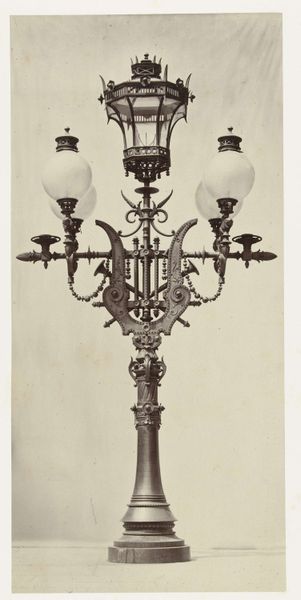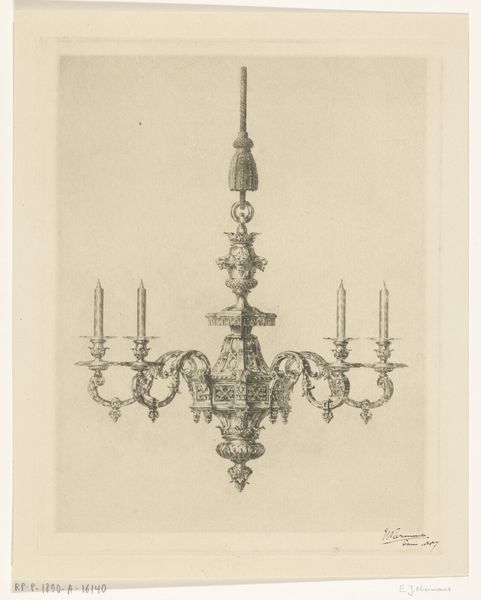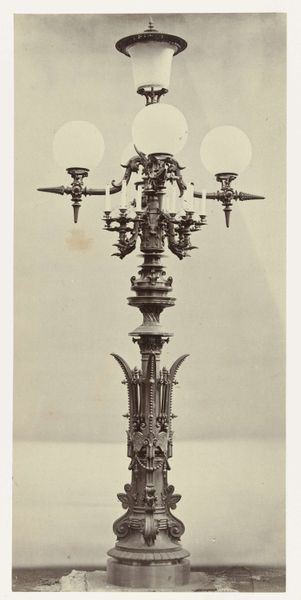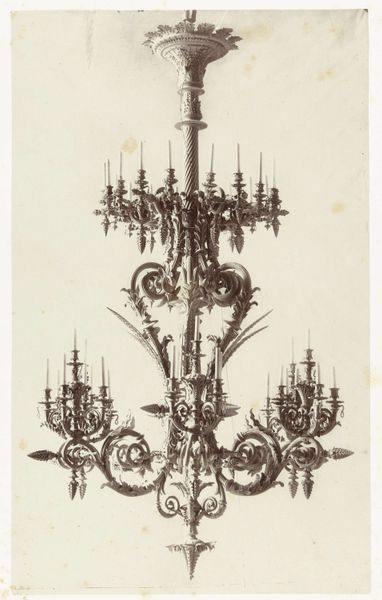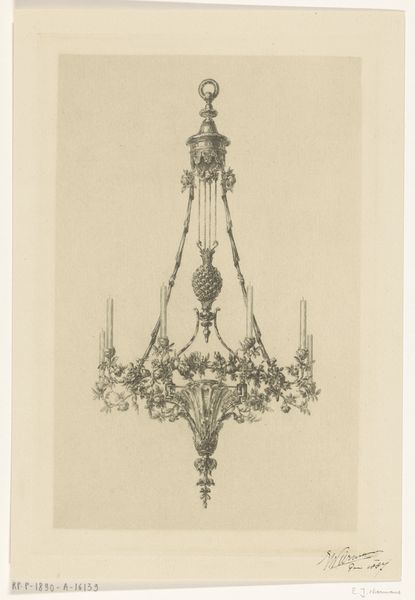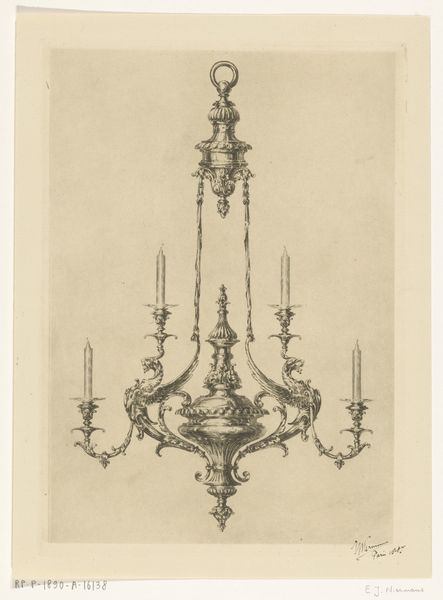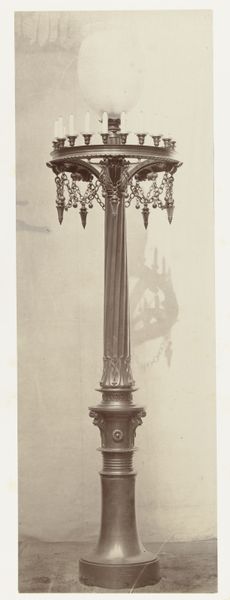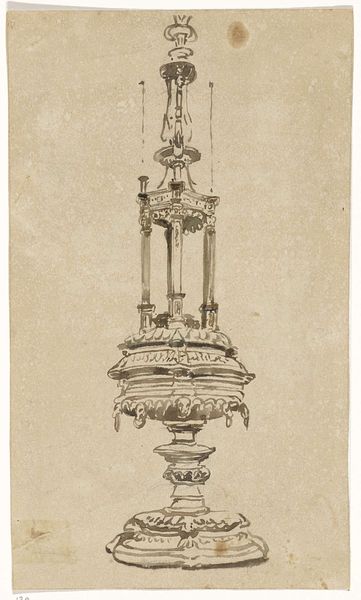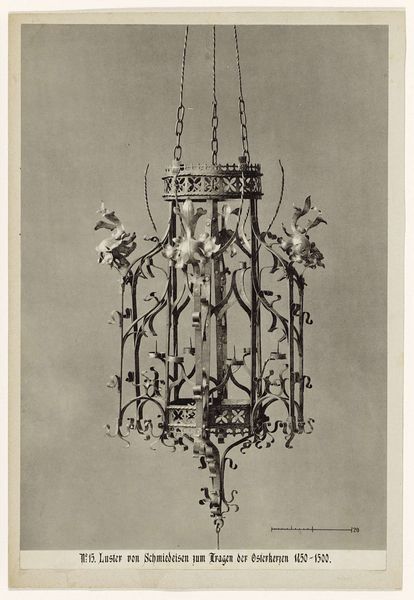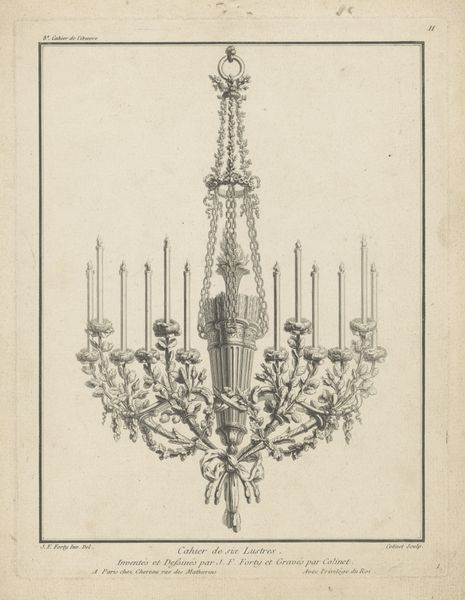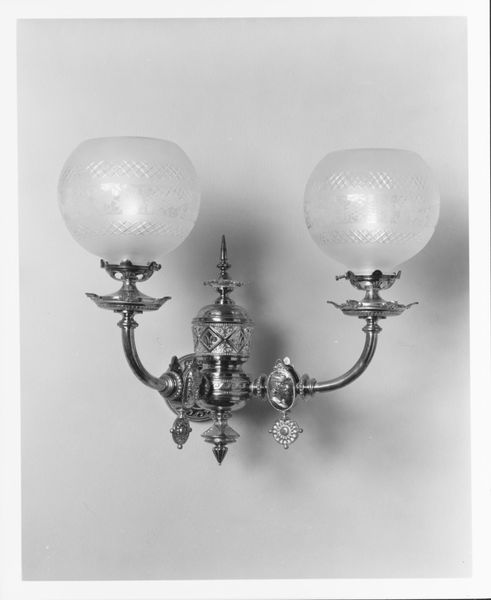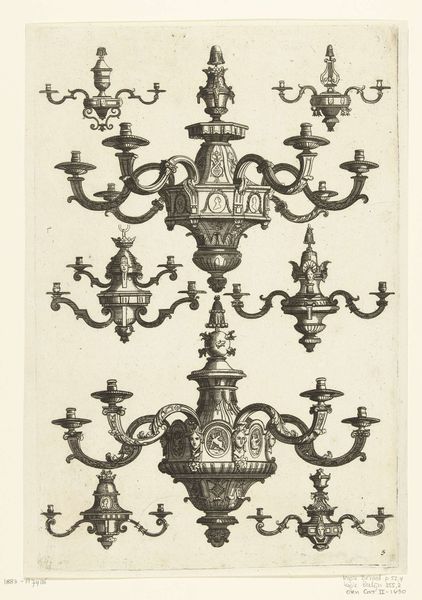
Bronzen kandelaar met drie etages rustend op een voet voorzien van ornamenten c. 1878 - 1881
0:00
0:00
bronze, photography, sculpture
#
still-life-photography
#
bronze
#
photography
#
sculpture
Dimensions: height 265 mm, width 138 mm, height 620 mm, width 438 mm
Copyright: Rijks Museum: Open Domain
Curator: This captivating image, dating from around 1878 to 1881, presents a bronze candelabrum, a magnificent three-tiered structure, all captured through the lens of Louis-Emile Durandelle. Editor: My first thought is one of grandeur, almost ecclesiastical. The symmetry, the tiers rising, it feels like a secular cathedral of light. Curator: Indeed. Consider the context: the late 19th century was a period of significant industrial expansion and burgeoning capitalist society. Objects like these were powerful signifiers of status and wealth. It speaks to the inequalities inherent in that gilded age, doesn't it? This isn't just a photograph; it’s a document reflecting those socioeconomic structures. Editor: Absolutely. Visually, I'm drawn to the ornamental details. Garlands, scrolling acanthus leaves... these symbols evoke classical ideas of beauty and abundance, ideas that wealthy families wanted to project about themselves. Curator: Precisely. And look at how Durandelle, through the then-developing technology of photography, is able to render these material objects with such hyper-realism. This highlights the skill and labor poured into such pieces, and simultaneously renders it as a mere commodity, to be consumed by the upper class. The photograph itself performs that tension, a work of art of documenting... art as property. Editor: And beyond the material value, the light held in those candle holders, the gesture of offering light. This recalls much older associations – candlelight as knowledge, as divine presence. Bronze too, has a lasting quality, often found in commemorations or objects made to persist through time. I’m wondering what type of patron commissioned such a photograph. Was this intended for commercial catalogs, private viewing, or something else? Curator: That’s an intriguing question, one that demands more research into Durandelle’s practice. Regardless, it certainly reflects a specific social reality – of extreme opulence existing alongside systemic inequities. Editor: Thinking about our current moment, in terms of both environmental and economic crises, a candelabrum of this kind feels quite distant from our daily concerns, in a way almost provocative. Curator: True. Examining it prompts us to ask urgent questions about material consumption, historical privilege, and how these images are mediated, viewed, and interpreted through diverse socio-political lenses. Editor: A final flicker then: a visual record with lingering symbolic reverberations, for its original audience, and for us today.
Comments
No comments
Be the first to comment and join the conversation on the ultimate creative platform.
